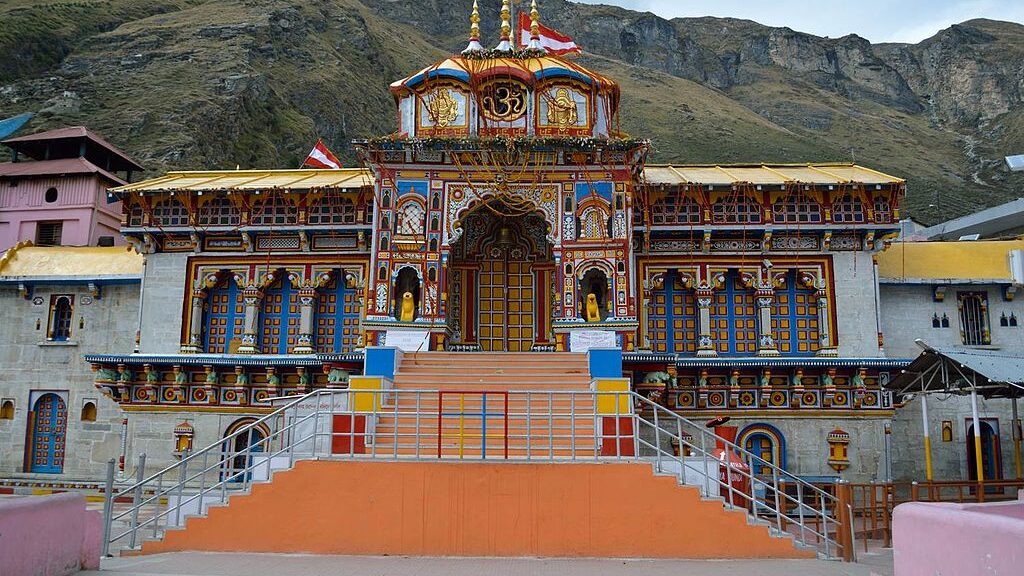India, a land of spirituality and diverse cultures, is home to some of the most magnificent and spiritually significant temples in the world. These temples are not just places of worship; they are architectural wonders, repositories of history, and living symbols of faith. Here’s a journey through the top 10 temples of India that capture the essence of this spiritual nation.
Table of Contents
- Kashi Vishwanath Temple, Varanasi:
- Badrinath Temple, Uttarakhand:
- Tirupati Balaji Temple, Andhra Pradesh:
- Amarnath Temple, Jammu and Kashmir:
- Ramanathaswamy Temple, Rameswaram:
- Khajuraho Temples, Madhya Pradesh:
- Golden Temple (Harmandir Sahib), Amritsar:
- Konark Sun Temple, Odisha:
- Meenakshi Amman Temple, Madurai:
- Somnath Temple, Gujarat:
Kashi Vishwanath Temple, Varanasi:
Nestled along the banks of the sacred Ganges River, the Kashi Vishwanath Temple is one of the holiest sites for Hindus. The temple is dedicated to Lord Shiva and is known for its serene and spiritually charged atmosphere.

Badrinath Temple, Uttarakhand:
Located in the picturesque Himalayan region, Badrinath Temple is dedicated to Lord Vishnu. It is one of the four Char Dham pilgrimage sites and stands amidst breathtaking natural beauty.

Tirupati Balaji Temple, Andhra Pradesh:
The Tirumala Venkateswara Temple in Tirupati is one of the busiest pilgrimage centers globally, drawing millions of devotees every year. The temple is dedicated to Lord Venkateswara, an incarnation of Lord Vishnu.

Amarnath Temple, Jammu and Kashmir:
Situated in a cave amidst snow-clad mountains, the Amarnath Temple is dedicated to Lord Shiva. It is famous for the naturally occurring ice lingam, which symbolizes Lord Shiva.

Ramanathaswamy Temple, Rameswaram:
Located on Rameswaram Island in Tamil Nadu, this temple is one of the 12 Jyotirlinga temples dedicated to Lord Shiva. The temple’s long corridor and exquisite architecture are awe-inspiring.

Khajuraho Temples, Madhya Pradesh:
The Khajuraho Group of Monuments is known for its intricately carved temples, many of which are dedicated to various Hindu deities. These temples are a UNESCO World Heritage Site and are famous for their sensual sculptures.

Golden Temple (Harmandir Sahib), Amritsar:
The Golden Temple is the holiest shrine in Sikhism and a symbol of religious tolerance and harmony. Its golden dome, surrounded by a sacred pool, is a sight to behold, especially when illuminated at night.

Konark Sun Temple, Odisha:
This UNESCO World Heritage Site is dedicated to the Sun God, Surya. The temple’s architecture is remarkable, with intricately carved wheels that function as sundials.

Meenakshi Amman Temple, Madurai:
Situated in the heart of Madurai, this temple is dedicated to Goddess Meenakshi and Lord Sundareswarar. It is renowned for its stunning Dravidian architecture and bustling bazaars.

Somnath Temple, Gujarat:
One of the 12 Jyotirlinga temples, Somnath Temple stands on the western coast of India. It has a rich history, having been rebuilt several times after destruction by invaders, making it a symbol of resilience.

CONCLUSION:-
Indian temples represent the rich tapestry of the country’s cultural and religious heritage. Here’s a general overview of Indian temples:
Architectural Diversity: Indian temples exhibit a wide range of architectural styles. These styles often depend on the region and the historical period in which the temple was constructed. Some prominent architectural styles include:
- Nagara Style: Common in North India, it features towering spires called shikharas.
- Dravidian Style: Prominent in South India, known for its intricately carved gopurams (gateway towers) and large, open courtyards.
- Vesara Style: A combination of both Nagara and Dravidian styles, seen in central India.
2. Spiritual Significance: Temples in India are primarily places of worship and devotion. They are dedicated to various deities from Hinduism, Buddhism, Jainism, and other faiths. Each temple has its own rituals, festivals, and traditions associated with the deity it venerates.
3. Rituals and Worship: Temples in India are centers of religious activity. Daily rituals, pujas (offerings), and ceremonies are performed to honor the deity. These rituals vary by temple and the specific deity being worshiped.
4. Pilgrimage Sites: Many Indian temples are important pilgrimage destinations. Devotees from all over the country and the world visit these temples to seek blessings, perform rituals, and deepen their spiritual connection.
5. Art and Sculpture: Indian temples are renowned for their intricate sculptures and artwork. They often depict scenes from mythology, history, and daily life. The sculptures not only serve a decorative purpose but also convey religious teachings and stories.
6. Festivals and Celebrations: Temples are at the heart of India’s vibrant festival culture. Festivals like Diwali, Navratri, and Holi are celebrated with great fervor in temples, attracting devotees and tourists alike.
7. Historical Significance: Many temples in India have historical importance, with some dating back over a thousand years. They have witnessed the rise and fall of empires and played pivotal roles in shaping local and national histories.
8. Social and Cultural Hubs: Temples often serve as cultural centers, hosting music and dance performances, educational activities, and community gatherings.




